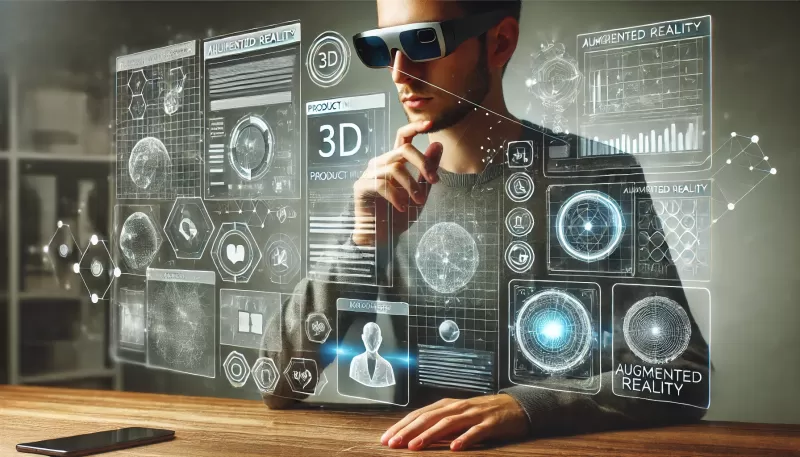With the continuous technological evolution, augmented reality (AR) has become an integral part of the future of web design. AR is not only used in games and entertainment applications, but it can also be effectively integrated into website design to enhance user experience and deliver interactive content. If you're wondering, how can I integrate augmented reality technologies into my website design?, here’s a comprehensive guide.
What is Augmented Reality and How Does It Work?
Augmented reality is a technology that overlays digital elements onto real-world scenes using the device's camera. Users can see these digital elements as if they were part of their surrounding reality. For example, you can use your phone's camera to view a 3D model of a product on your desk or in your home without needing the physical item.
The Importance of Integrating AR into Website Design
There are several benefits to integrating AR into your website:
- Unique User Experience: AR offers an innovative interactive experience that enhances user engagement with your website.
- Increased Interaction Rates: Thanks to AR, users will stay on your site longer, which increases interaction rates and reduces bounce rates.
- Interactive Content Delivery: You can display your products or services in a 3D way that makes them feel more real, helping users make purchase decisions faster.
- Multiple Applications: Whether you run an e-commerce site, an educational platform, or an entertainment site, AR can help you attract a wider audience.
Steps to Integrate AR Technologies into Your Website
- Choosing the Right Tools and Platforms The first step to integrating AR is selecting the right tools. There are several platforms that offer solutions for embedding AR into websites. Some of the most popular include:
- AR.js: An open-source framework that can be used to easily integrate AR technologies.
- WebXR: An API from Google that supports both AR and VR technologies in browsers.
- Unity and Vuforia: Unity, paired with the Vuforia platform, is an excellent choice for developing advanced AR experiences.
- Designing AR Content After selecting the appropriate tool, you'll need to create the content that will be displayed via AR. This content could be 3D models, interactive videos, or even text and images that appear in the user's surroundings.
- Integrating AR into Your Site There are several ways to integrate AR technologies into your website:
- Embedding AR Libraries into Your Site’s Code: You can embed libraries like AR.js or WebXR directly into your site’s code.
- Using Cloud Services: Some platforms offer cloud services that allow you to upload AR models and call them within your site.
- Ensuring Compatibility It's important to ensure that the AR technologies you use are compatible with all devices and browsers. Not all browsers support AR equally, so you'll need to test your website across different devices to ensure a smooth experience.
- Optimizing for SEO To ensure your site’s success after integrating AR, it’s important to optimize content for search engines:
- Use the main heading "How Can I Integrate Augmented Reality Technologies into My Website Design?" to increase the chances of your article appearing in search results.
- Naturally incorporate related keywords like "AR technologies," "web design," and "interactive experience" throughout the article.
- Write a compelling meta description that highlights the benefits of integrating AR into websites.
Examples of AR Use in Websites
- E-commerce: Some online stores allow customers to virtually try out products using AR. For example, a customer can see how furniture looks in their room before making a purchase.
- Education: Some educational websites use AR to display scientific concepts in a 3D, interactive way, making it easier for students to understand lessons.
- Tourism: Tourism websites can use AR to display 3D models of tourist attractions before visiting them.
Conclusion
Integrating augmented reality technologies into your website design can provide a unique and innovative experience for users, enhancing their interaction and increasing their satisfaction with the site. By following the steps mentioned above, you can deliver interactive content using cutting-edge technologies and keep your website ahead of the competition.
